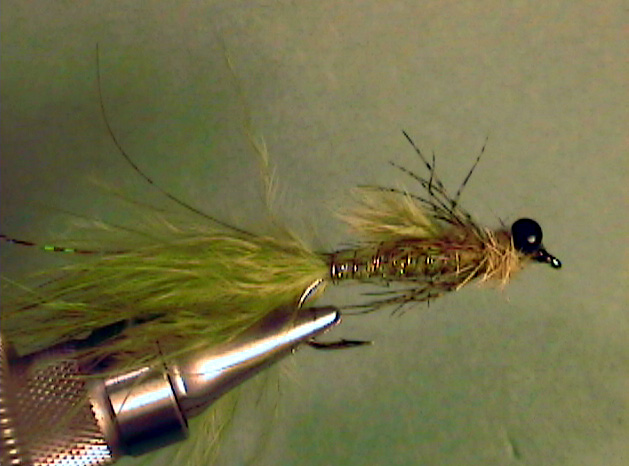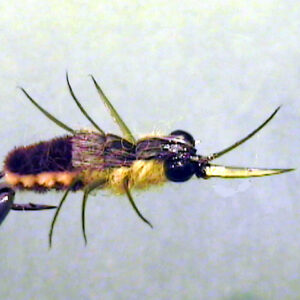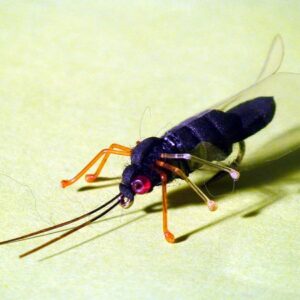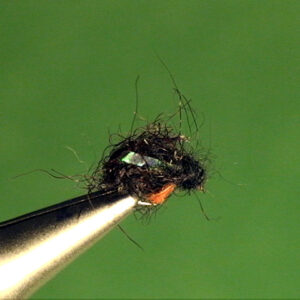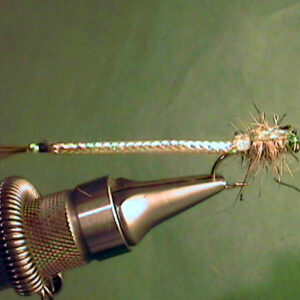Hook Size: 8
Damselfly Nymph
The Damselfly is probably the best know insect on lakes there is. They exist in huge
quantities in many lakes and slow moving streams. The insects have a preference
for vegetation with long stems. That’s where they hide to catch the food they eat.
They eat mayfly nymphs, scuds and midge larvae and pupae. Trout, bass and all
types of panfish feed on them.
Fish eat the nymphs throughout the season but the best time to catch them on the
damselfly nymph imitation is when they begin to hatch. When the nymphs begin to
hatch into an adult they swim to the shore beneath the surface of the water. They
usually swim within a few inches of the surface, not in the deeper water.
Nymph Presentation:
During a hatch you want to imitate the nymphs swimming to the shoreline just
underneath the surface. This is best done with a floating fly line cast from the
shore. Other times of the year you want to work the nymphs in and around the
shoreline vegetation. In some cases you may be able to work it over submerged
weed beds or grass beds.
It doesn’t hurt to add some action to the fly by slowing stripping it in with twitches of
the line. A slight flicker of the tip of the rod also seems to help add a swimming
action to the fly. The “Perfect Fly” Damselfly Nymph has a lot of built-in action but it
may help to add to it during the retrieve.
